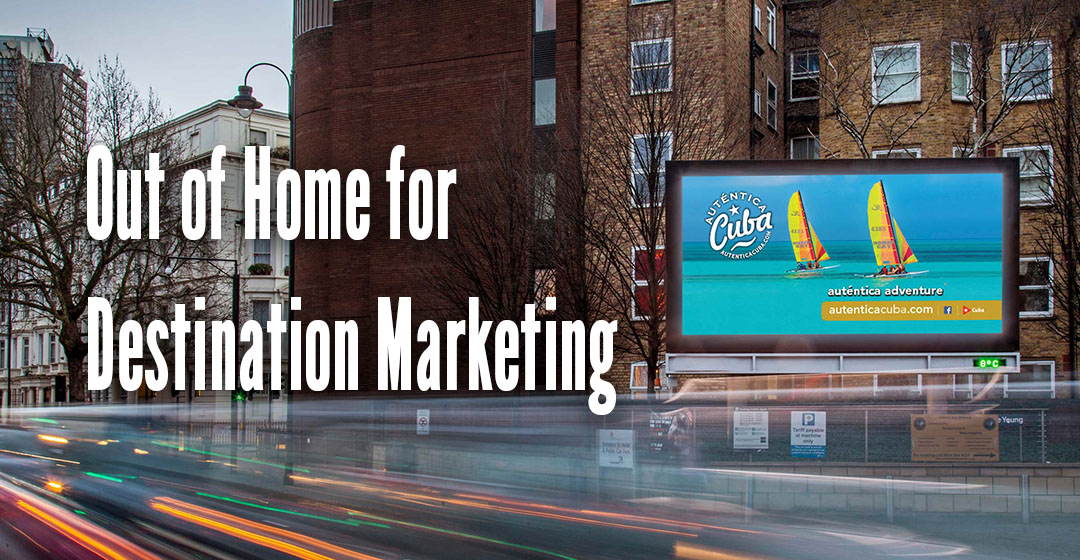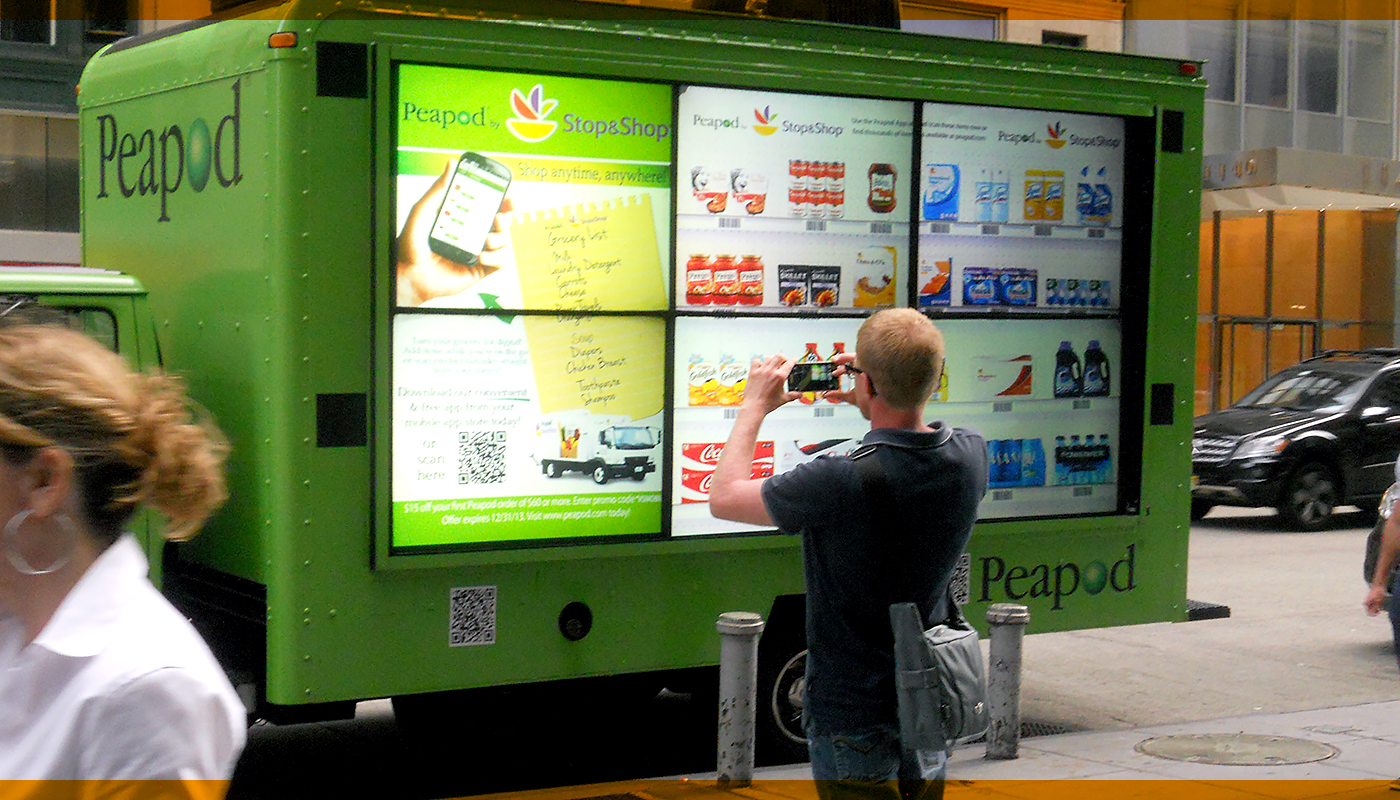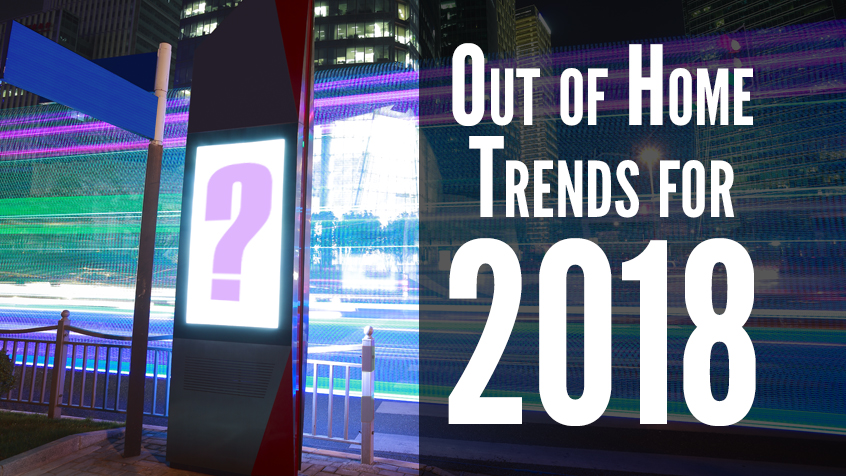Out of Home for Destination Marketing: The Power of Location to Influence Travelers
In the constantly evolving marketing world, the power of Out of Home for destination marketing is undeniable. Out of Home can deliver beautiful, unskippable creative to targeted audiences, supply reach and frequency, and scale easily and efficiently.
When the covid pandemic hit travel was one of the hardest hit industries. Once people were comfortable traveling again we saw a surge in “revenge travel” as all the frustration of being cooped up manifested itself with a huge surge of people getting back to traveling. While the signs indicate that we have probably passed the revenge travel window, tourism is still growing as consumers have a new found appreciation for the ability to travel. The market is still growing, international tourism is projected to grow by 15% in 2024, while domestically 91% plan to travel this year, with 40% planning to travel more than 2023. When effectively leveraged Out of Home media, can drive awareness and interest, compelling potential tourists to choose one destination over others.
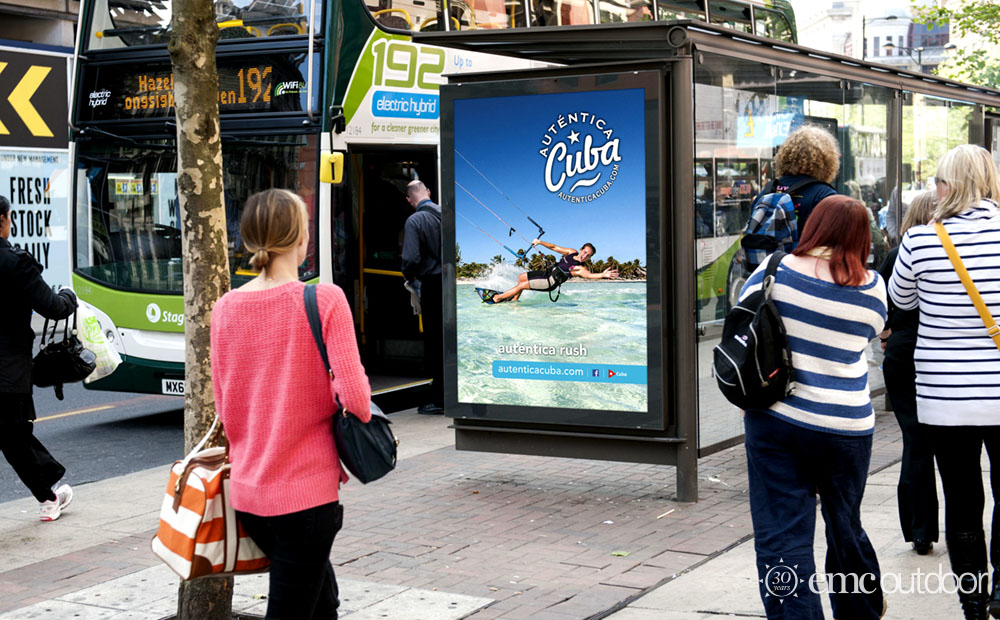
Understanding Out-of-Home Media
Out of Home media spans a broad spectrum of advertising strategies that engage people while away from their residences. This can encompass traditional OOH media like billboards and transit advertising to digital displays in public places like bus shelters or shopping centers. It can also reach potential travelers with lifestyle or place-paced media in locations like gyms, gas stations, and shopping centers. And finally, it can bring destinations to life through the creative use of experiential activations that can bring the destination to the travelers.
One of the distinctive characteristics of OOH media is its ability to consistently reach its audience and deliver messaging without being blocked, skipped, or ignored. It doesn’t necessitate the audience to opt-in, unlike digital advertising or direct mail. Instead, it reaches potential customers in their everyday environment, thus making its reach more comprehensive.
Regardless of whether people are actively engaged with their screens or just going about their daily routines, OOH media still succeeds in creating lasting brand impressions. This uninterrupted exposure gives OOH media an edge in raising brand awareness. This makes OOH a strategic core media choice for destination marketing organizations.
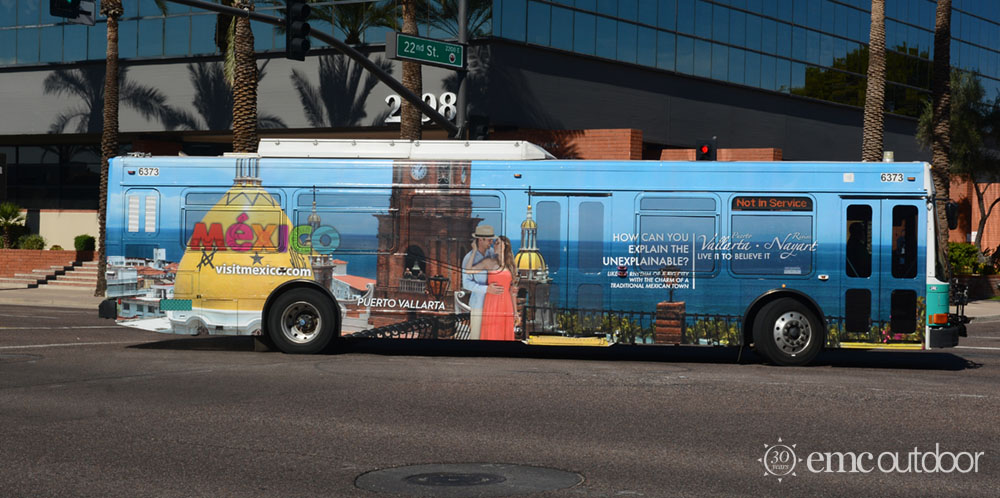
Out of Home for Destination Marketing: A Perfect Match
Tourism and OOH media share a unique relationship that propels each other’s success. Most individuals planning a trip are inherently explorative and receptive to recommendations about potential destinations. This makes them an ideal audience for OOH media campaigns that market vacation hotspots. By tapping into the brand-building power of Out of Home, marketers can lay the groundwork of mental availability before the traveler starts to think about their trip and trigger actions like research once they do.
Out-of-home media possesses a unique ability to captivate audiences with big, bold, larger-than-life, visually striking, and unforgettable creative content, making it an ideal platform for showcasing the beauty and allure of a destination. Whether through vibrant imagery, immersive experiences, or compelling storytelling, using Out of Home for destination marketing can evoke emotions and spark wanderlust in potential travelers. By leveraging bold visuals, dynamic design elements, and innovative technologies, advertisers can effectively convey the essence and character of the destination, leaving a lasting impression on viewers. It’s crucial for the creative content to not only be visually appealing but also resonate with the cultural identity and values of the destination, fostering a deeper connection with the audience and inspiring them to explore all that the destination has to offer.
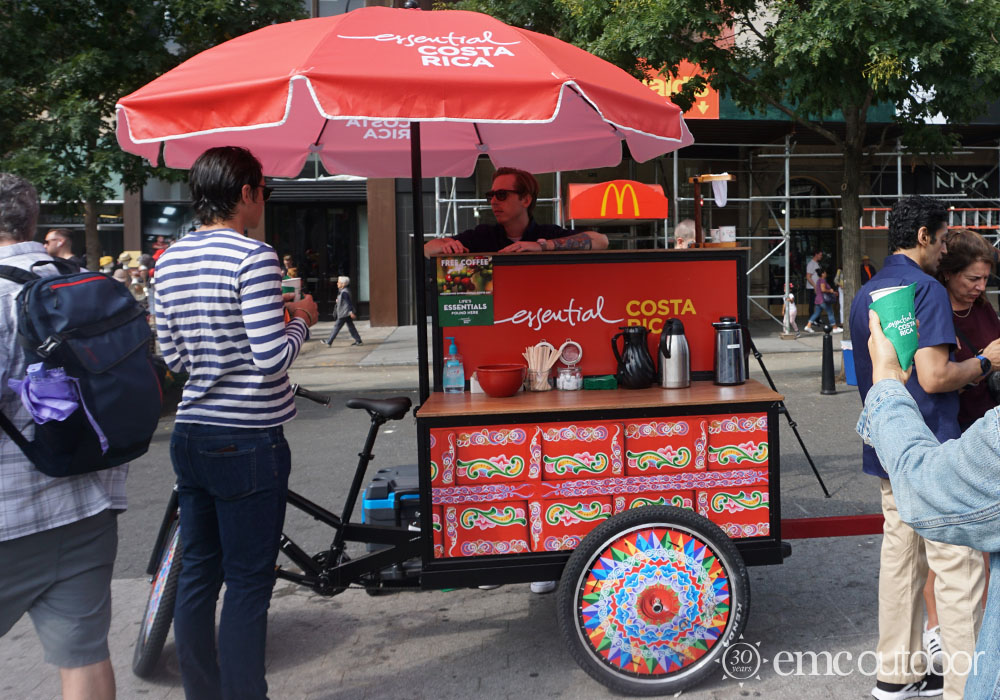
Strategies for Successful OOH Media Campaigns
To maximize the potential of Out of Home for Destination Marketing, strategic positioning, and message clarity are crucial. High-traffic areas are obvious targets for media placement as they can deliver large audiences, high visibility and great reach. But OOH can do more than just high visibility – it can also deliver highly targeted audiences – based on different demographic and behavioral data.
OOH media offers an advantage for tourism marketing by allowing advertisers to pinpoint specific feeder markets for a destination. For instance, if a Caribbean island wants to attract more visitors from Boston, Hartford, or Buffalo, placing media in that region can effectively capture the attention of potential travelers.
By targeting these known feeder markets, destinations can ensure that their advertising efforts reach individuals who are more likely to be interested in visiting, thus maximizing the return on investment for their marketing campaigns. They can also expand their reach by targeting look-alike markets. Modeling the characteristics of known feeder areas can allow OOH to easily translate and scale to similar markets, reaching untapped audiences.
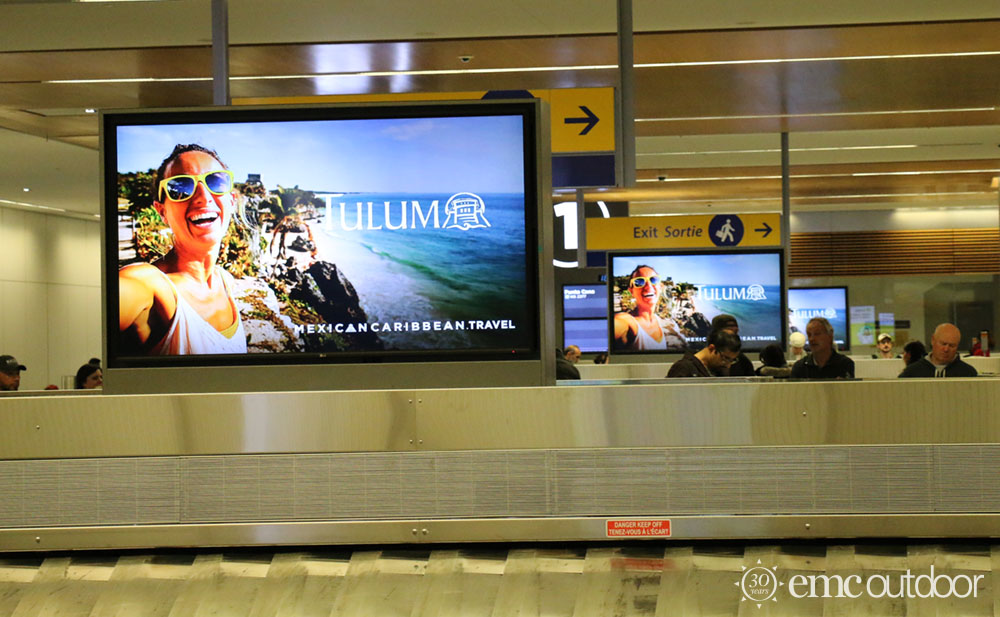
Or marketers can use media around travel hubs – like in airports and train stations – in places where people are already thinking about travel. These locations serve as natural hubs for travelers, making them ideal environments for destination advertisements. By strategically placing ads in these spaces, advertisers can capture the attention of individuals who are already in a travel-oriented mindset, thereby increasing the likelihood of influencing their destination choices. Advertisers can showcase the attractions and experiences offered by the destination, enticing travelers to consider it for their next trip.
Advertisers should be sure to use the full palette of Out of Home for Destination Marketing as they offer different benefits. Large-scale media such as billboards and bulletins are excellent for reaching a broad audience and generating high visibility. Meanwhile, more surface-level media with longer dwell times – like transit advertising or digital screens in shopping centers allow for more in-depth storytelling and engagement. These formats provide ample space to convey detailed information about the destination, including travel itineraries, local attractions, and special offers. Additionally, the inclusion of QR codes on surface-level media enables tourists to access relevant content instantaneously, enhancing their overall experience and facilitating direct engagement with the destination’s tourism offerings.
By effectively using OOH media, destination marketers can strategically trigger the travel bug in viewers, plant the seeds of interest in a destination, highlight the unique offerings of their destination, reach highly targeted audiences, and influence the decision-making process when planning a vacation.
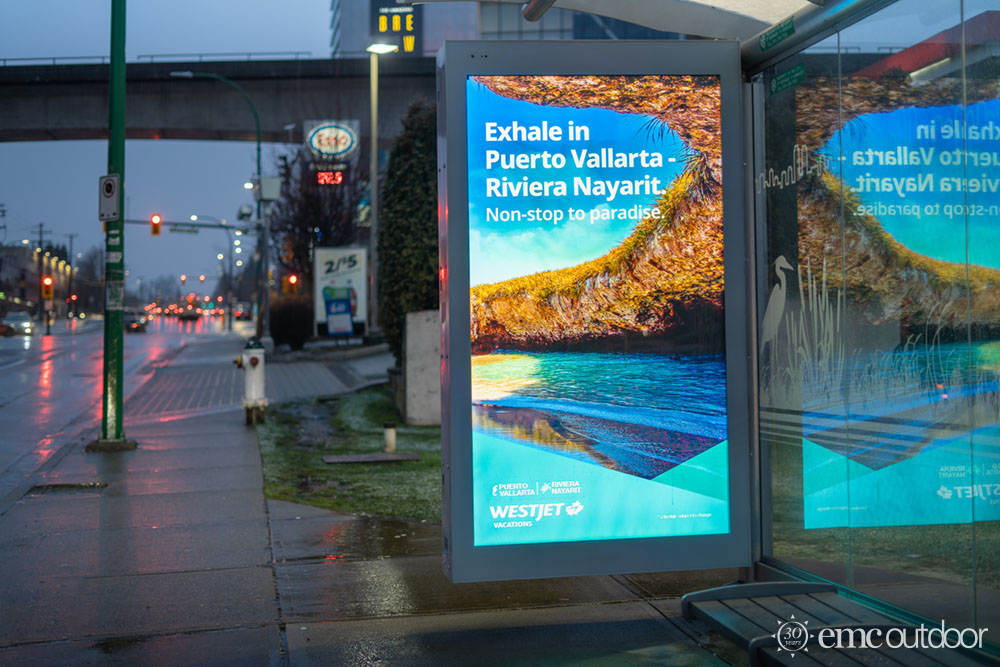
Aligning Out of Home for Destination Marketing with Digital Media:
For any well-rounded marketing plan, no media should exist in a vacuum. Unfortunately, all too often, we see marketers leave the Out of Home planning till the end as an afterthought or a box to be checked. This does both the advertiser and the media a disservice. OOH works best when it is planned and integrated from an omnichannel perspective so that it aligns with targeting and creative. Numerous studies have shown that OOH is excellent at driving online activation, and in an environment where the audience is doing virtually all of their browsing and booking online, getting them there is half the battle.

Advertisers should also consider how they can integrate their social media efforts with OOH. In particular experiential activations provide exceptional social media content, generated by both the advertiser and the audience. By merging the physical and digital aspects, marketers can craft an unforgettable brand experience that can potentially convert into tourism. Out of Home for destination marketing could serve as the necessary nudge to push prospective travelers into transforming their intent into an actual vacation plan.
Measuring Success: Beyond Impressions and Reach
While traditional metrics like impressions and reach provide valuable insight into the performance of an OOH media campaign, they do not provide the full picture. For a more comprehensive understanding, marketers should also consider metrics such as audience engagement and brand recall.
Ultimately, the real measure of success is the number of people who were inspired to start planning their trips as a direct result of your campaign. In the digital age, technology makes it simpler to monitor these factors. For instance, the use of geo-location data can determine if there has been an upsurge in the number of visitors to your promoted destination following your campaign’s deployment.
By analyzing these metrics, marketers can better understand the effectiveness of their OOH media strategy and fine-tune it to create more impactful campaigns in the future. Remember, a successful campaign does not just reach its audience—it resonates with them and inspires action.
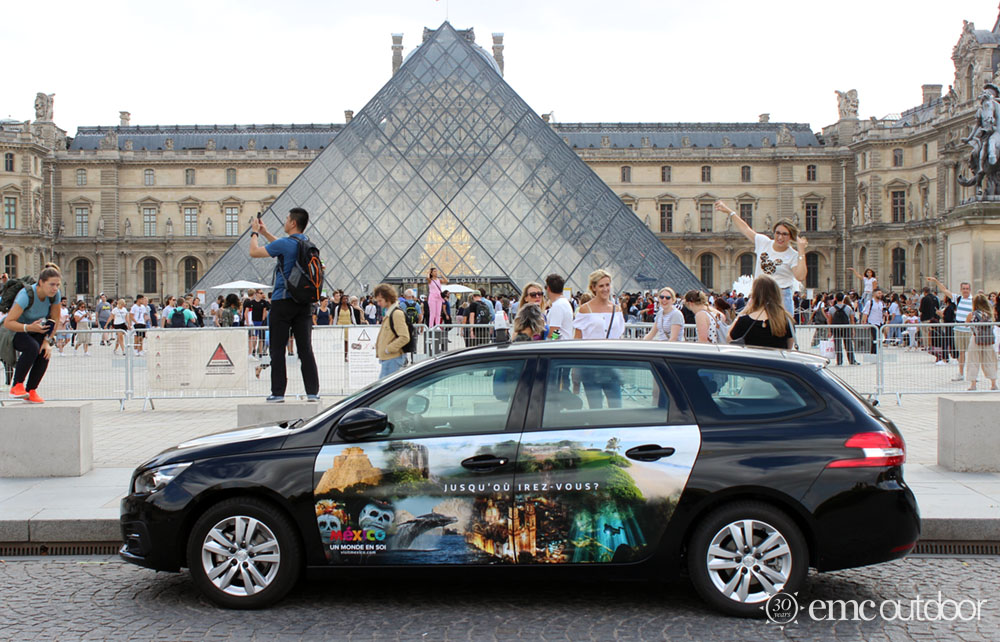
Make Your Reservations:
Out of Home for destination marketing presents a compelling opportunity to reach and influence potential travelers. By leveraging the unique characteristics of OOH media, such as its broad reach, visual impact, and ability to merge physical and digital elements, marketers can create immersive campaigns that inspire wanderlust and drive tourism. With strategic planning, creative execution, and careful measurement of success, OOH media can play a pivotal role in shaping travel decisions and enticing travelers to explore new destinations.
Contact us to learn more about how we can bring your destination to life with Out of Home.

